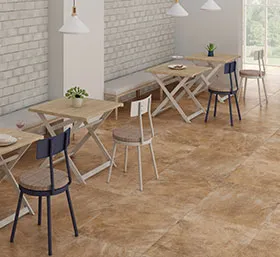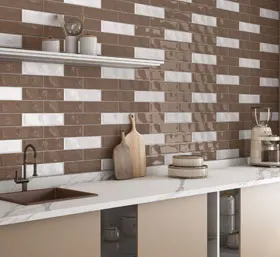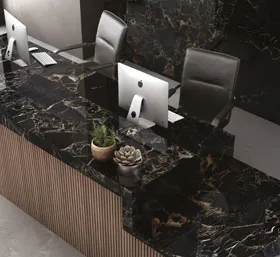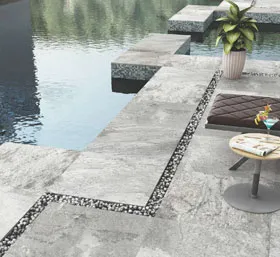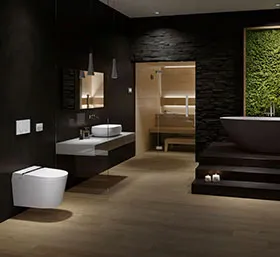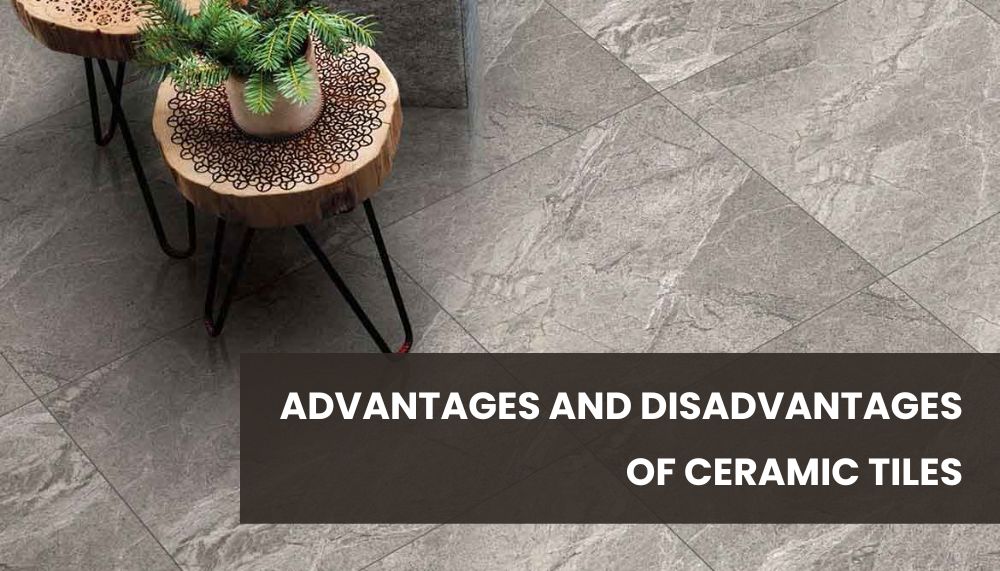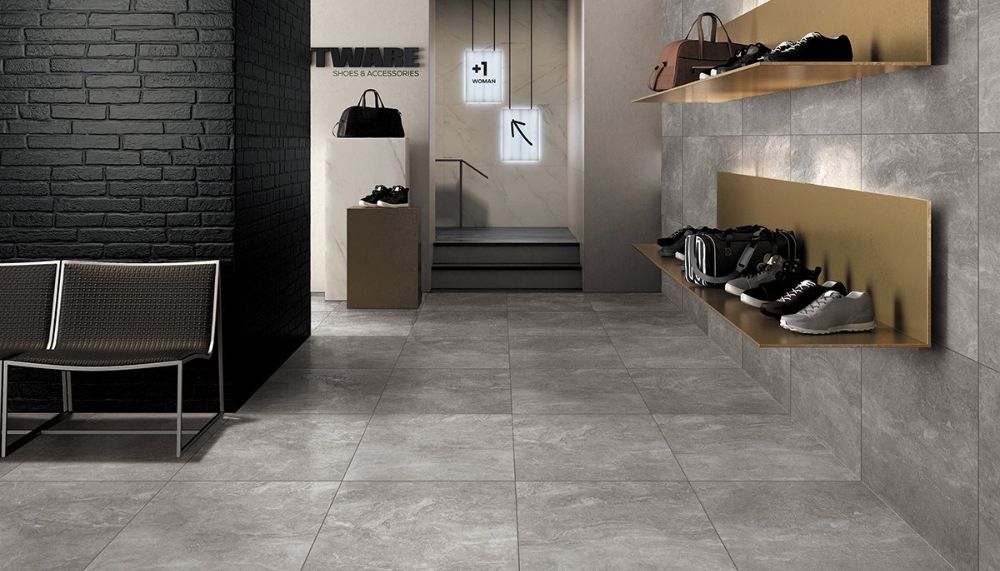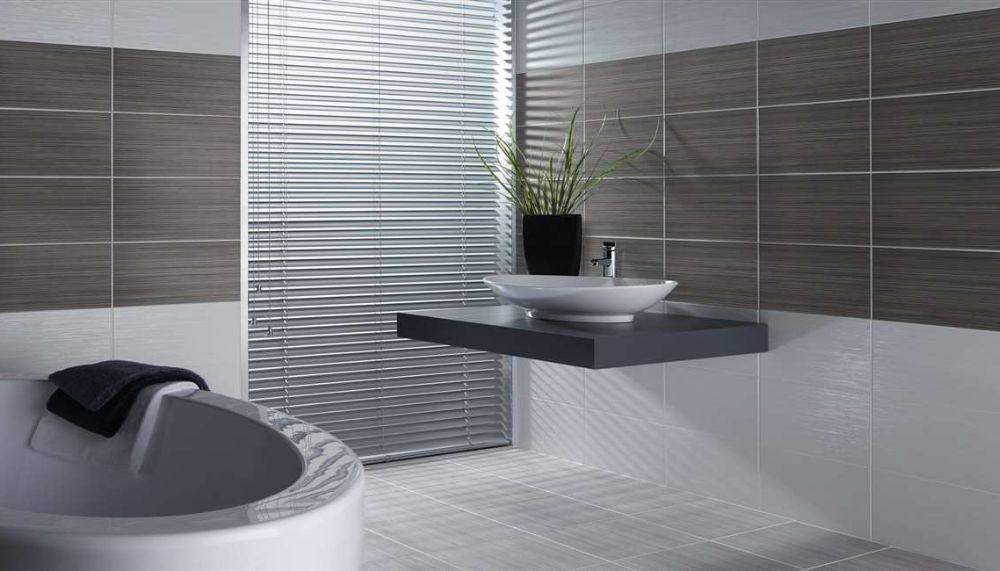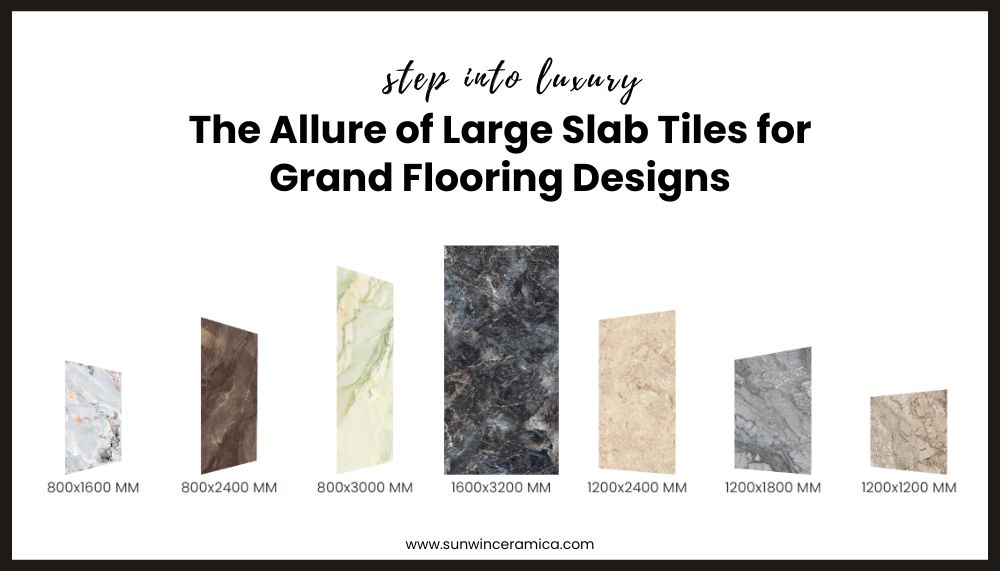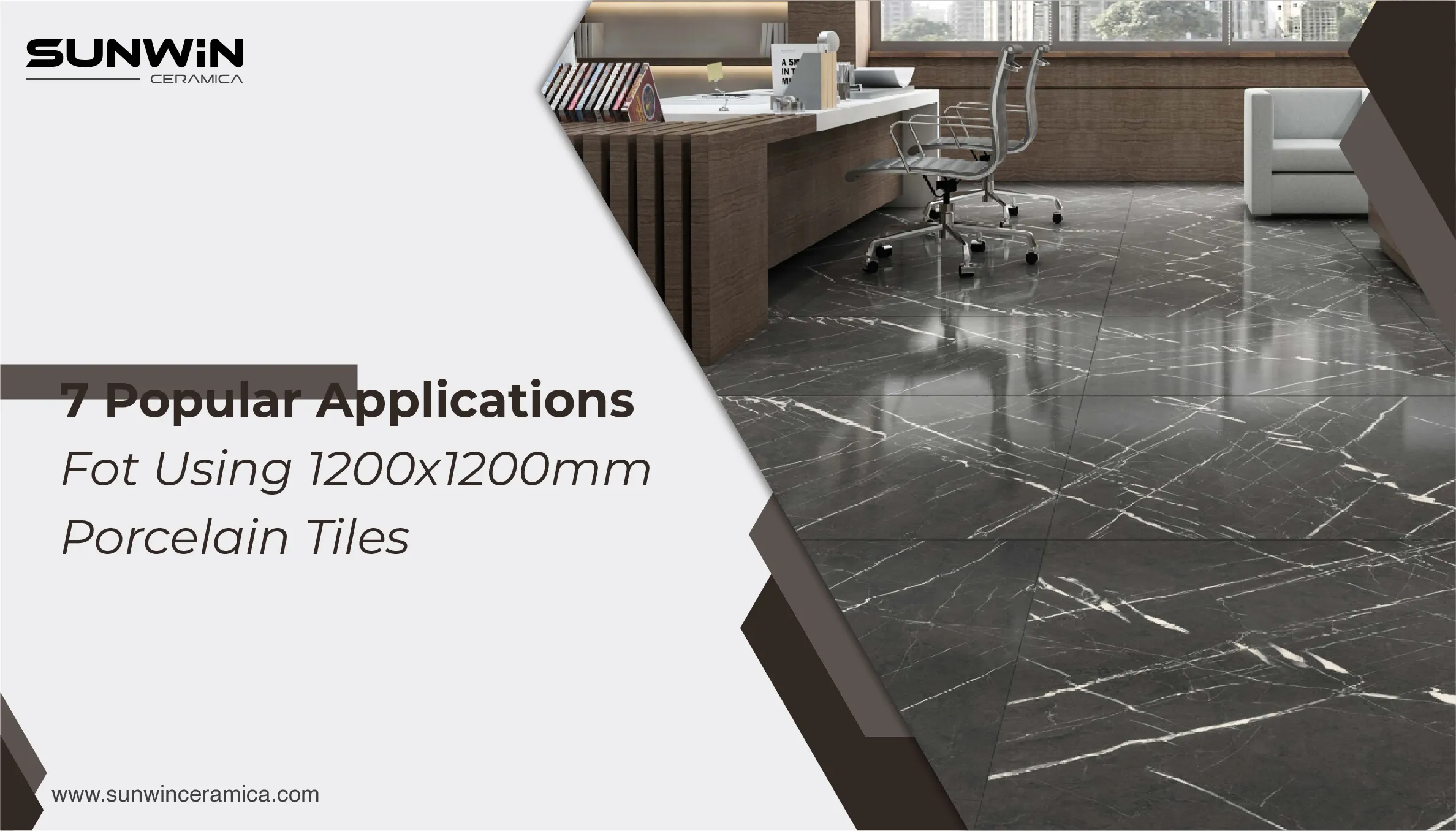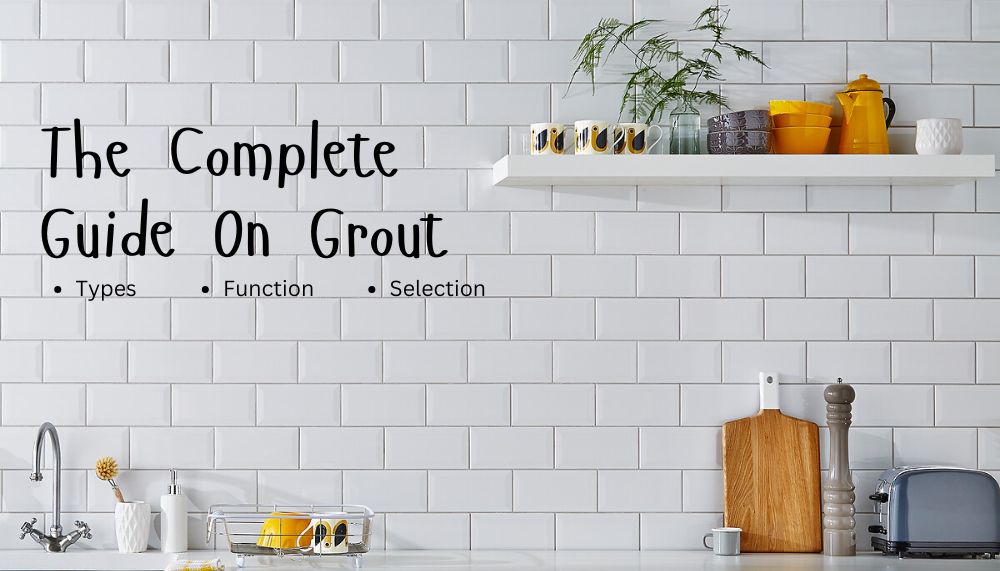
Did you know that grout, which is generally considered a minor detail, covers approximately 10-15% of the tile surface?
Not only that, it also plays a pivotal role in preserving tile aesthetics and durability. Yes, more than just binders, grout acts as a beauty and durability enhancer for tiles. While choosing the right grout can enhance your tiles, a wrong choice can also create a contrasting mismatch or result in poor installation. Therefore, selecting the right grout becomes very important. The selection is not easy and depends on several factors.
Thus, Sunwin one of the leading floor and wall tile manufacturers in India, has brought you a comprehensive guide on selecting the right grout. Let's begin with the question, what is grout?
What is Grout?
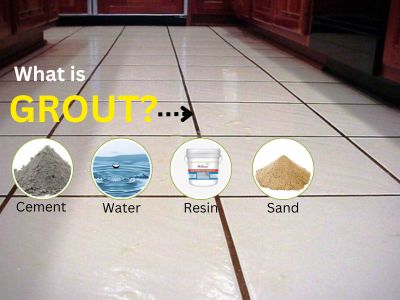
Grout is a cementitious or epoxy-primarily based material used to fill the gaps among tiles. It supplies balance and a cohesive appearance for tiled surfaces. In essence, grout serves as a filler and a binding agent. Traditionally, grout is crafted from a combination of cement, water, resin, and then sand. However, formulations may also consist of components or be completely epoxy-based. The role of grout extends beyond mere aesthetics. It prevents debris, moisture, and pests from infiltrating the surface. This safeguards your investment in tile installation.
Functions of Grout
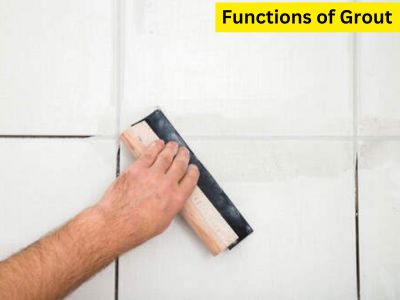
Grout is not just a filler between tiles; its functions include
-
Structural Integrity:
Grout serves as an addition to the overall strength and balance of the tiled floor. It also keeps the tiles stationary. The strain is spread evenly, which minimizes the chances of displacement or breakage of the tile.
-
Moisture Prevention:
With removing spaces, grout acts as a barrier, preventing water from leaking underneath the floor tiles. Water slowly leaks into the underlying structure which can result in mold growth or assistance in further ruining the structure and weakening the bond of the tile.
-
Aesthetic Undertone:
Grout makes the tile scheme more appealing. The grout can be paired with the tile for a seamless effect or evaluated beside it in order to highlight the tile pattern and arrangement, which gives a more profound look.
-
The buildup of an accumulation of dirt:
Well-maintained grout minimizes the accumulation of dirt and debris. Poorly filled grout expands the chances of debris as it acts like a sponge for grime.
Types of Grout
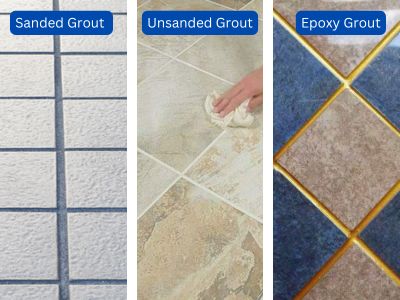
Grout comes in different types, each suited for specific applications:
- Sanded Grout - Primarily used in high-traffic zones or places that require wider grout lines (larger than 1/8 inch).
- Unsanded Grout - Most suitable for narrow grout lines of high gloss tiles (1/16 and 1/8 inch wide).
- Epoxy Grout - Fulfills the conditions of stain-resistant, waterproof, and extreme durability. These are ideal for kitchen tiles and bathroom tiles.
Grout Line Width
The appearance and working capability of a project can be affected by the width of the grout lines:
- Narrow (1/16 to 1/8 inch) – Suited for modern and minimalistic aesthetics. Best used with smaller tiles such as 600x600mm and and even subway tiles.
- Standard (1/8 to 3/16 inch) – These dimensions are conveniently used in households as they offer aesthetic value as well as practicality.
- Wide (1/4 inch or more) – Best used with vertical layout style tiles such as 800x1600mm and other textured tiles as these dimensions work well with emphasizing rustic or traditional designs.
Grout Line colour
It is key to choose the best grout colour as it plays a vital role in beautifying the tiles.
- Matching colour – With grout that matches the tile colour, any grout lines will hardly be noticeable. Subsequently, the tiles will be the center of attention.
- Contrasting colour – Grouts that do not match the tile colour will accentuate the tiles, thereby drawing more attention.
Selection of Grout
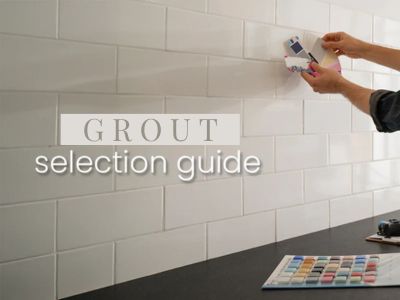
Choosing the right grout is essential for achieving a seamless and long-lasting tile installation. The right grout enhances the overall look, ensures durability, and prevents moisture damage. Let’s see how to choose the right one.
Tile Finish
The finish of your tiles plays a crucial role in how the grout appears and performs.
- Glossy Tiles – Reflect light and create a bright, modern look. Grout lines may appear more defined due to the reflective surface.
- Matte Tiles – Offer a soft, subtle look with less glare. These tiles can help grout lines blend more naturally.
- Textured Tiles – Add depth and character but may trap grout residue, requiring more careful cleaning and maintenance.
Room Lighting
Lighting affects how grout colour and tile appearance are perceived in a space.
- Natural Light – Enhances the true colour of both tiles and grout, making subtle variations more noticeable.
- Artificial Light – Can alter the grout's appearance depending on the warmth or coolness of the light source.
- Dim Lighting – This may make dark grout lines blend in, while lighter grout can create a more defined contrast.
Maintenance and Cleaning
- Porosity and Sealability: Cement double grouts are porous and thus tend to soak up stains if they are not sealed properly. Non-porous grout is the easiest to clean and stains are less likely. For households that are more prone to spills, epoxy formulation cement is recommended as it is of a higher price but better quality.
- Cleaning Frequency: Kitchen backsplashes or bathroom flooring grout areas that are used frequently may also be the least maintained grout. Studies show surfaces that have low pores and hyper-durable cement in comparison to traditional cementitious grouts, use up to 30% less time to clean up.
- Ease of cleaning: Over time, the appearance of the tiled surface can be maintained with the aid of grout that is stain and mold-resistant. Antimicrobial or anti-staining grout can be used, especially if the tiling is in a place that is humid or sees a lot of footfall.
- Long-Term Durability: Grout should be regularly cleaned to maintain its surface and ensure longevity tiles. Home improvement experts often suggest using pH-neutral cleaning to ensure the grout is not made worse. If you are using cement grout, setting up a resealing routine will help eliminate stains and deteriorating out grout.
Balancing Practicality with Aesthetics
Choosing the right grout is often a balancing act between practicality and aesthetics. Homeowners must weigh the visual appeal of the grout against its long-term performance. For example, while a contrasting grout colour creates an attractive accent, it also highlights imperfections over time. On the other hand, a grout colour that closely matches the tile might conceal dirt and stains better but could potentially result in a less defined pattern.
Practical Case Studies and Examples
To better understand the decision-making process, consider a few practical examples:
-
Kitchen Backsplash
In a kitchen, high-performance epoxy grout may be the best option for a location that is frequently exposed to splatter and grease. Epoxy is best for kitchen backsplashes since it is non-porous and does not absorb stains or oil during cleaning. If there is dirt, it also does not make a neutral tone that goes well with the tile grout and cleaning dirt is difficult.
-
Bathroom Floor
Grout line dimensions are critical in bathrooms since it is a moisture-absorbent area. Sand-grouted cement can be lightly sanded to allow for a little adjustment. This way grout lines for natural stone tiles that slightly differ in size can not contain mold and water. For best results, the grout has to be regularly maintained and sealed to ensure the pristine feeling in such bathrooms.
-
Outdoor Patio
For outdoor installations, the sanded compounds are more flexible for the grout lines to accommodate temperature changes and the onset of water. Epoxy grout has the highest recommendation, however, in regions where the elements are prone to changing. Grout for outdoor use should be adjusted accordingly where maximum durability is required and dirt and moisture need to be withstood.
Solving Common Challenges: Problems & Solutions
Many homeowners have common concerns regarding grout selection, such as durability, stain resistance, and ease of cleaning. Addressing these problems requires a methodical approach:
Problem: Staining of surfaces and Discolouration
Solution: Instead of normal grout, stain-resistant grout that is moisture-resistant is advised. It prevents foreign materials from soaking through the surface or on areas that are exposed to water. Further, cementitious grout can be used to seal staining. Proper sealing of grouts can maintain the original colour and texture of the grout for a longer period of up to 50%.
Problem: Gaps and cuts formation.
Solution: To prevent the grout cracking issue, the usage of sanded or unsanded grout versions in combination with the right spacing between grout lines will help. Adjustable joints will work great when there is a potential chance of movement within inflexible building sections, and so will the sanded grout, which will become unshrinkable in wider gaps. Unsanded will work great in narrower spaces where there's little chance of cracking.
Problem: High Maintenance
Solution: Because epoxy grout is non-porous, it offers a major benefit in challenging-to-clean spaces like kitchens and restrooms. Long-term financial benefits can result from the reduction in cleaning time and frequency, even though the initial charge would be preferable. Additionally, choosing a grout colour that hides small stains might help delay the onset of wear and tear over time.
In a Nutshell
Choosing the appropriate grout requires a thorough evaluation of several variables. Learn about grout and its key characteristics, as well as the varieties available, the proper grout line width and colour, the tile's end, the lighting conditions in the space, and the maintenance requirements over time. This choice may appear daunting to homeowners, but by dissecting each aspect, the process becomes less mysterious. Contact our tile expert for a free consultation if you are still unable to make the right decision.

